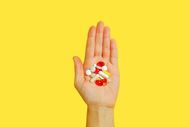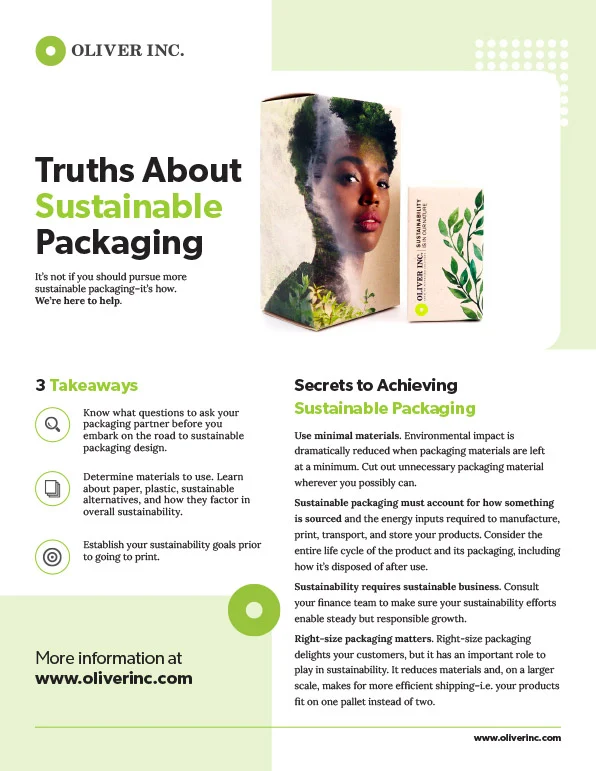How to Design Pharmaceutical Packaging That Is Both Effective and Attractive
Posted by Oliver Inc. on 9th Sep 2025
Pharmaceutical packaging is often seen as purely functional. Most people really don’t think about it much beyond opening it up and tossing it aside without a second thought. However, the truth is that packaging in the pharmaceutical world does a lot more than hold pills or protect liquids. It plays a vital role in safety, branding, the user experience, and even in patient adherence. Bonus points if you can make it look good, too.
How, then, do you balance functionality with visual appeal when designing pharmaceutical packaging? Read on below for a few pointers:
First Things First: Pharmaceutical Packaging Has to Work
Before you get lost in choosing colors and fonts or designing a slick logo, the packaging has to do its job, which is protecting the product inside from light, moisture, air, and contamination. Medications are delicate. They often have very specific storage requirements, and if the packaging fails at that, it doesn’t matter how pretty it is.
You also have to consider dosage instructions, expiration dates, and batch numbers. Because these are essential, the design has to include space for this information in a way that’s legible and easy to find. Anyone taking their medicine shouldn’t have to squint or flip the box around four times just to read the directions, whether they’re elderly or in a rush.
Consider the Experience for the User
If you’ve ever tried to open a blister pack of capsules with sore hands, then you already know how much of a nightmare it can be. There’s also older adults who may have arthritis or vision problems – at best, problematic packaging can baffle them; at worst, it can outright hinder them from taking their medications. Designing packaging with the end-user in mind, therefore, can go a long way towards improving health outcomes. To that end, your pharmaceutical packaging needs to be easy to open, reseal (if needed), and understand.
Child-resistant features are another big one. They’re essential for safety, but they shouldn’t be so tricky that adults can’t manage them. The idea is to strike the perfect balance: the packaging needs to keep kids out while letting adults in without it becoming a frustrating experience.
How It Looks Counts – Even in Pharma
Now that we’ve covered the basics, let’s talk about looks. Just because it’s packaging that’s meant to hold medicine doesn’t mean that it has to be dull or boring. More and more pharmaceutical brands are leaning into thoughtful design, and it’s making a huge difference. Attractive packaging can make a brand feel more professional, which, in turn, often boosts their trustworthiness.
Color is an especially powerful tool here. Cool blues and greens, for example, can suggest calmness and trust, while bright reds and oranges can indicate energy or caution. Just remember to be careful, as some colors are already strongly associated with certain types of medications. You’ll want to stay within reasonable bounds to avoid confusion.
Fonts and layout are just as important. Instead of using overly fancy, intricate fonts that can be hard to decipher (especially for older users), use clean and simple typography that’s easy to read at a glance instead. Also, make sure that there’s enough blank space. A cluttered label isn’t just ugly – it can also feel overwhelming.
Branding, But Without Overdoing It
Pharmaceutical packaging can be tricky, because it has to follow strict regulations. However, that doesn’t mean that you have to strip it completely of personality. Branding can still shine through in subtle ways, through color schemes, the placement of the logos, tone of voice in the copy, or even the texture of the box.
Creating a billboard isn’t the goal here. It’s to give the customer a sense of trust and reliability. Your packaging should quietly reinforce the brand identity without screaming for attention. It should feel more like a firm handshake that introduces your brand to the customer, not like it’s shouting your name from across the room.
If you produce several different product lines, it’s also a good idea to keep the packaging design consistent across all of them. Doing so will help customers recognize your brand on sight, even if the specific medication is new to them.
Sustainability Is the Future
Nowadays, environmentally-friendly packaging isn’t just a nice bonus. It’s quickly becoming an expectation. Consumers are increasingly aware of their environmental impact, and pharmaceutical companies simply can’t afford to ignore that.
Designing packaging that’s recyclable, biodegradable, or made from renewable resources doesn’t just benefit the planet. It also strengthens your brand’s reputation as forward-thinking and responsible. However, it’s important to keep in mind that any shift towards greener materials still has to meet strict safety and sterility standards.
Work With Us on Your Pharmaceutical Packaging
Oliver Inc. is committed to being your partner when it comes to designing pharmaceutical packaging that meets your exacting standards. Collaborate with us today by filling out the contact form that can be found on this page.






